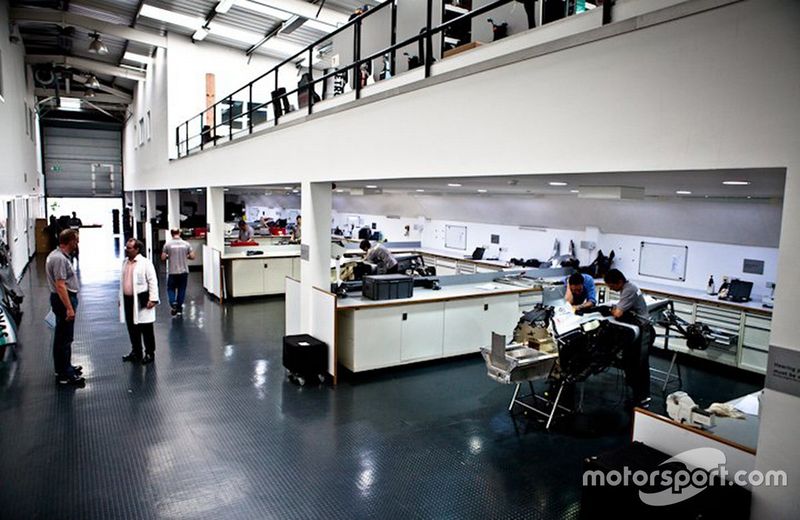The steps needed to keep drivers as the most important agents
Software, sensors and data’s increased influence have reduced the driver’s impact on performance, but Autosport Engineering's columnist and Venturi Formula E driver Lucas di Grassi says this can be improved

Photo by: Alastair Staley / Motorsport Images

Engineering
Our experts' guide on how you can become a better racing driver
I am often asked whether the driver or the engineer is the most important element in Formula E, because the cars run so close together for the whole race. Clearly I am biased, but I would say it’s still the driver who makes the biggest difference, as you need a set of skills that is different from virtually every other racing series.
Take for example the brakes in Formula E – we have carbon brakes that only operate well when they are hot. But you don’t want to heat them up like normal combustion racing series for the start and waste energy, so you put zero heat in the brakes, which means they’re completely cold, the tyres too. As the battery is completely full, you can’t have regenerative braking and, for the first few braking zones, you don’t have any recuperation.
Braking with cold brakes and cold tyres is just one of the unique techniques you need to master, especially on tracks that only exist once a year before they go back to being public roads. It’s not like the ultimate fine-tuning process of Formula 1, where drivers know every corner like the back of their hand. Normally in a Formula E weekend you only have around 12 to 20 laps, depending on the conditions, at full power before the race starts to run through everything.
We practise most scenarios on the sim, but you can’t experience everything in that environment. In-race strategies come down to game theory because there’s no one best outcome. It depends on what the other drivers do, and you have to react.
It’s down to the driver to decide how much energy you’re willing to use to maintain or gain places, because when you fight you go slower and use more energy. The engineer can tell you not to waste time fighting someone with 2-3% more energy, or tell you if you have enough of a gap to use attack mode without losing lots of places. But in the end it’s a driver’s decision.
That said, the importance of the driver has clearly reduced a lot. In Formula E, every team has a computer deciding for the drivers what the optimum energy-saving strategy is.

Drivers have the final call on attack mode and key strategy calls, but their overall approach is heavily influenced by software
Photo by: Sam Bagnall / Motorsport Images
This is transmitted in a specific part of the track, either with sound signals – a ‘beep’ to lift and save energy, a ‘bop’ to use the regenerative braking – or different coloured lights on the steering wheel. And during a race, you can change the mode to a strategy that is more defensive or offensive, so computers already optimise a lot of stuff. That’s not only the case in Formula E, but across several series to make the cars easier and more consistent to drive.
We can’t go back to an analogue world of ‘pure driving’, when you would see Gilles Villeneuve powersliding around corners without any computer interference. As with everyday life, it’s almost impossible for racing to exist without software input. It’s an integral part of the systems we have, such as cars with hybrid systems, turbo engines, brake-by-wire and so on. All sports rely on development and motorsport is no different. It’s not realistic to reduce the influence of computers altogether, but that doesn’t mean that we leave a computer to drive the car.
I think in general the FIA understands that the driver needs to remain the most important agent. The current direction is good, but we are evolving so fast with autonomous tech and software development that we need to keep finding ways to integrate these systems in such a way that drivers stay as relevant as possible, having control of the most important elements, while closing the options for software-assisted driving where it’s not relevant.
A bit more specific development, such as torque vectoring or rear-wheel steering to help rotate the car in hairpins – even if this would be software-assisted – is more road-relevant than the beeps and bops we have in our ears. What can’t be integrated to give the driver more control of the car can be used in specific cases, for example in developing fully autonomous pitstops.
It is important that drivers continue to be in control as technologies develop, but this doesn’t have to be at the expense of motorsport as a vehicle for progress.

Di Grassi is realistic that the analogue world is gone, but is eager to see a balance that means drivers don't become irrelevant
Photo by: Sam Bagnall / Motorsport Images
Be part of the Autosport community
Join the conversationShare Or Save This Story
Subscribe and access Autosport.com with your ad-blocker.
From Formula 1 to MotoGP we report straight from the paddock because we love our sport, just like you. In order to keep delivering our expert journalism, our website uses advertising. Still, we want to give you the opportunity to enjoy an ad-free and tracker-free website and to continue using your adblocker.


















Top Comments